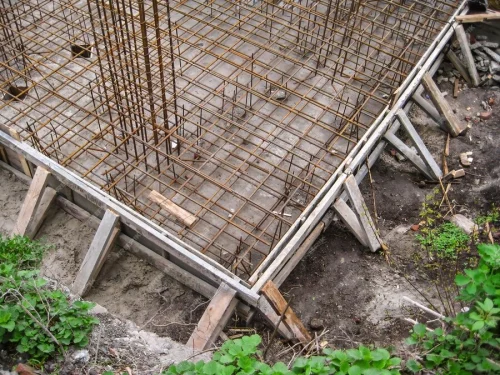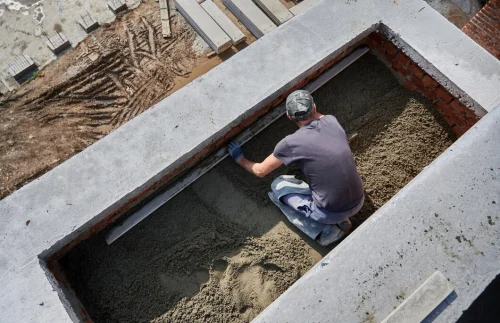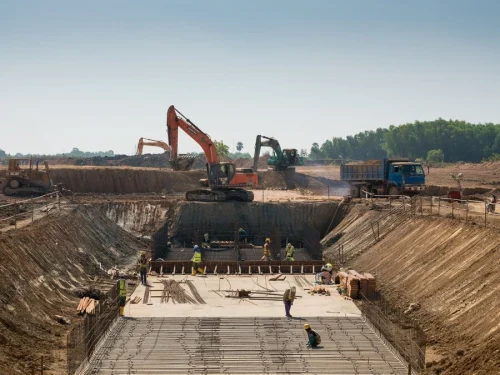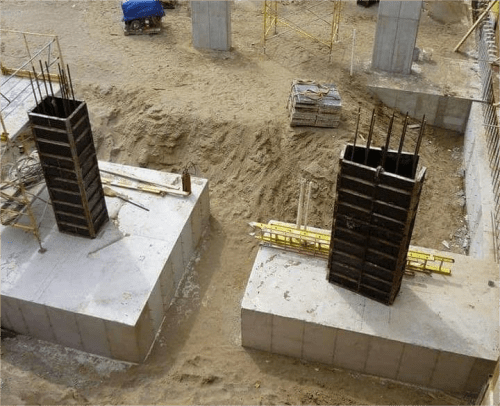
Best Waterproof for Cement Techniques to Protect Your Home from Dampness
February 18, 2025
How Stormproof Windows Can Save Your Home During Extreme Weather
February 18, 2025Table of contents
- Introduction
- Important Functions of Foundation Construction
- Different Types of Foundation Work
- Preparation of Site for Foundation Construction
- Excavation and Groundwork
- Waterproofing and Drainage
- Backfilling and Compaction
- Final Inspection & Quality Checks
- Preparing for the Next Construction Phase
- Conclusion
Introduction
Building a foundation is one of the steps in the construction of the house. If your foundation is built well, it will support the entire structure properly and will protect the building from natural calamities like earthquakes.
A strong foundation of a house provides stability and durability in the long run. Even if you're building a new house or making changes to the existing one, it's important to know the steps that are involved in foundation construction.
Important Functions of Foundation Construction
The foundation is the base of a house. If the base of the house is not prepared well, it can cause structural failure later. The right foundation design for house depends on multiple factors like soil type, climate, and load-bearing capacity.
The functions of fo construction include:
- It is a fundamental part of the building and contributes to its stability.
- It can be the main reason for fine-tuning after a while if it is not done right.
- It makes the building more durable and thus safer both in the short and long run.
- It helps to protect the house foundation from moisture from the groundwater the way it.
Different Types of Foundation Work
There are various sorts of foundations, and choosing the right one before constructing a house is paramount. Here’s everything about the foundations for a house:
Shallow Foundations
Shallow foundations are best for small to medium houses that are light in weight. The shallow foundations can further be classified as:
- Isolated Footing
- Strip Footing
- Combined Footing
- Cantilever Footing
- Raft Foundation
Deep Foundations
Deep foundations are best in areas with weak soil or high structural loads like a big multistory building. Deep foundation can be further classified as:
- Pile Foundation
- Basement Foundation
Preparation of Site for Foundation Construction
Before starting the process of construction building a foundation, the site is prepared and there are several foundation steps included in the process:
- Inspection of the Soil
- Cleaning the Ground
- Digging the Loose Soil
- Levelling the Ground
- Marking of the Foundation Site
Excavation and Groundwork
The first step in the construction of building a foundation is excavation. The process begins with determining the required depth based on the foundation type and soil conditions.
For shallow home foundation design, minimal excavation is required and for deep foundations, trenches or holes are carefully dug to accommodate piers or piles, ensuring stability for larger structures.
During the excavation process, it is important to take care of proper slope and drainage measures to prevent water accumulation.
Laying the Foundation Footings
Source: Pinterest
Footings play a crucial role in distributing the weight of a house evenly across the soil, ensuring stability and preventing settlement. The process of footings begins with formwork installation, where wooden or metal molds are used to hold the concrete in place.
After that steel bars are used to enhance the strength of the framework. Then, the concrete is poured and leveled to create a solid base. At last, the concrete was left to sit for several days which ensures durability and stability.
Waterproofing and Drainage
For building a foundation, an effective water management system like waterproofing and drainage is required. This process is important as it prevents cracks and structural damage. There are multiple types of waterproofing techniques, like sealants and coatings, which are applied to foundation walls to block moisture.
Also Read: How to Stop Water Leakage
Backfilling and Compaction
Once the process of building a foundation is complete, then the backfilling and compaction begin. This step involves replacing the excavated soil around the foundation walls to provide stability and support. Proper backfilling and compaction are essential for preventing structural issues in the future.
Final Inspection & Quality Checks
If you are planning to move ahead with the construction of your house, it is crucial to inspect the quality of the foundation laid. This step helps in eliminating future problems that could hinder the structure.
Also Read: How to Select the Right Window Size for your House
Preparing for the Next Construction Phase
Once the process of building a foundation is complete. The next phase of home construction begins. This includes framing, plumbing, electrical installations, and other works. A well-built foundation sets the stage for a safe and stable home.
Also Read: Stunning Blue Bathroom Tile Ideas to Transform Your Space
Conclusion
Construction of a house is a big responsibility and building a house with foundation is the most crucial step in the process. It requires careful planning and execution right from the beginning. So read the above-mentioned information to understand and build a stronger foundation for your dream house.
If you're planning to construct your home and want some aesthetically looking quality doors and windows, consult with professionals like Green Fortune Windows and Doors.











